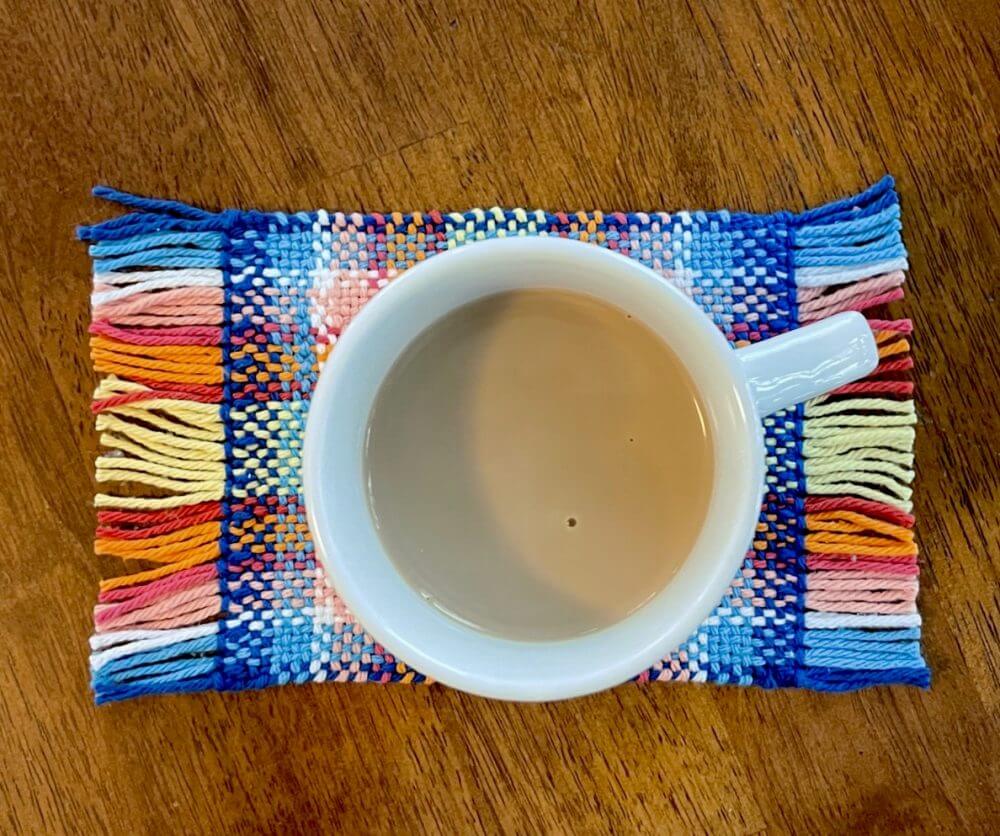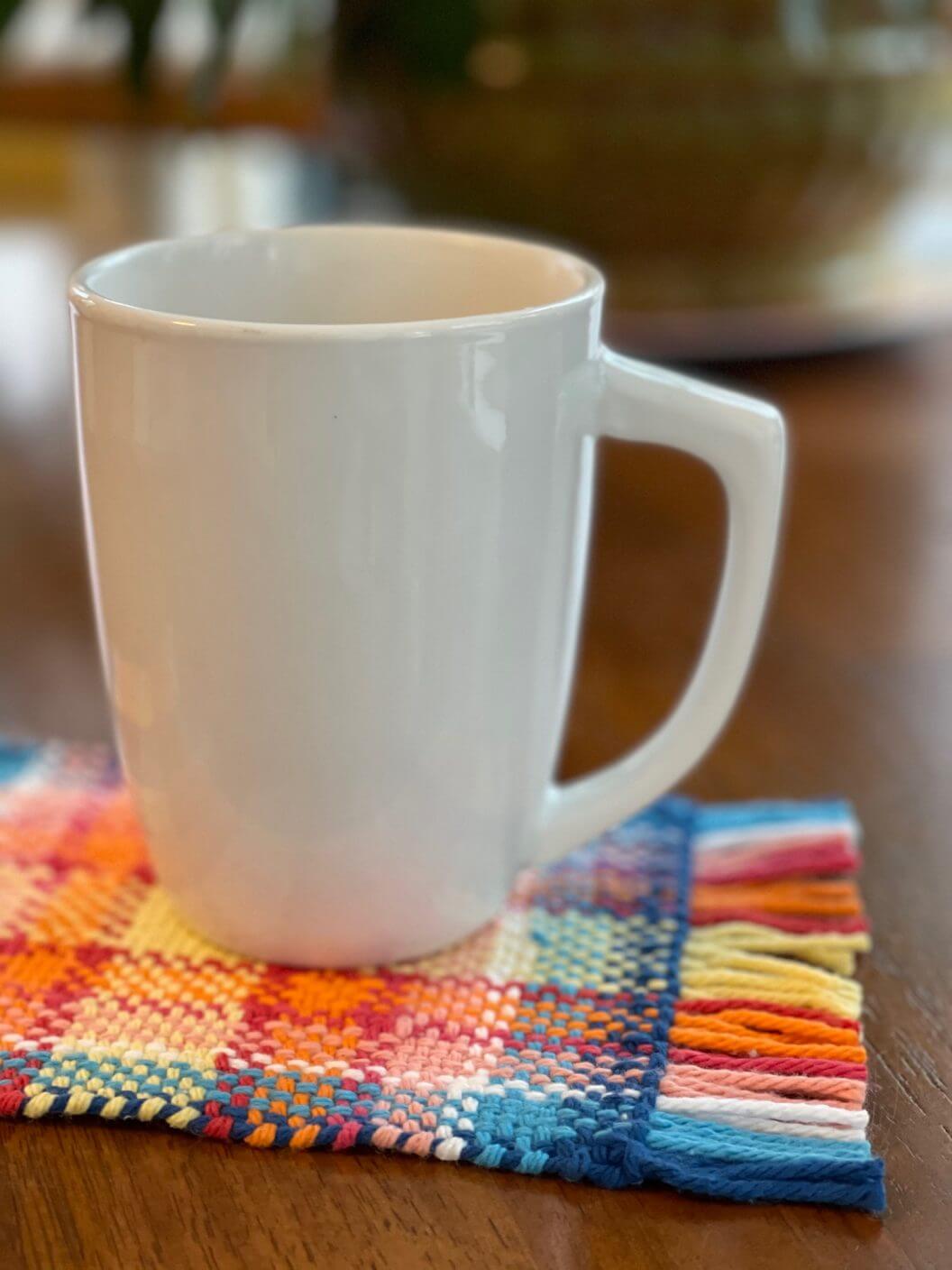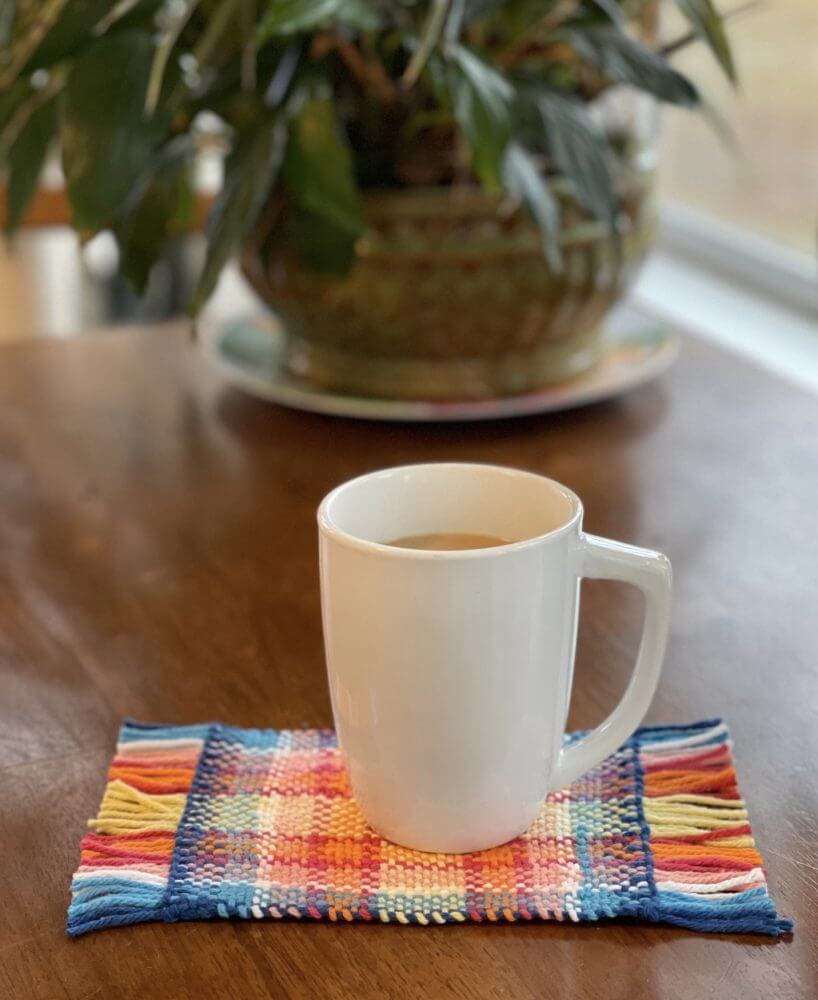
This is the first of our series of Mug Rugs. The patterns are free for you to enjoy. To view the introduction sheet please visit the Mug Rug overview page.
This months mug rug is designed to represent a new day. With the dawning of 2021, I think it’s safe to say we are all eager to put 2020 into the past.
The center “sun”, surrounded by sunrise colors, will start off our Year of Mug Rugs by teaching a simple, but necessary technique of changing color while weaving.
Our Mug Rug was woven on an 8″ Harp Forte, but could just as easily been done on one of our larger looms or the Presto.
Note that there are other methods that work well for changing colors. We are using the simplest here. Another way would be to carry the color up the edge. But in this case, because of the distance between the color repeats, we would create long floats and bulk at the salvage edge. You could join the yarns with a Russian Join when making a color change, but that is a somewhat more involved process and I wanted to keep this simple.
Refer to the Welcome Sheet for yarn choices and instructions that will be used throughout theYear of Mug Rugs patterns. One skein/ball of each color (approx. 120 yards of worsted weight cotton) will suffice for this project.
We will begin by warping the loom as follows, with a 1.5 yard warp:
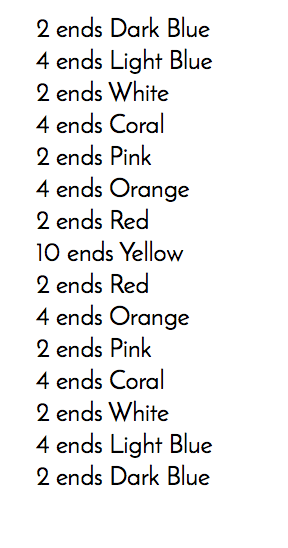
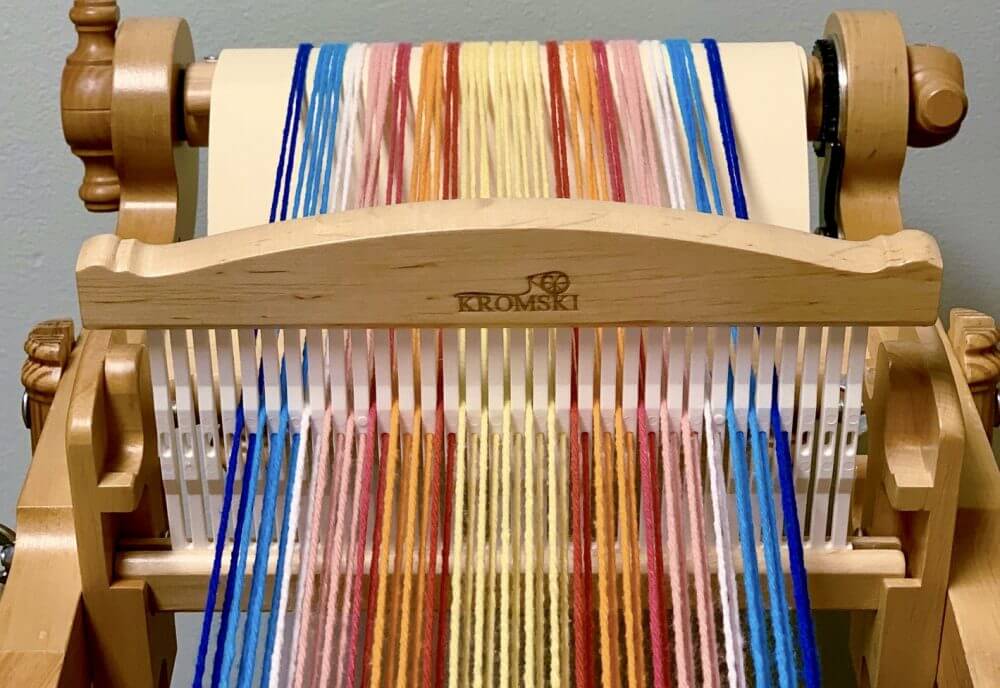
The weft colors will be exactly the same color and count as the warp, with the exception of the dark blue. rather than 2 rows, you will need to weave 4.
Begin by weaving the 4 rows of dark blue.
Don’t forget to leave enough yarn for the hem stitching as discussed in the Welcome Sheet.
Bring the yarn back through the next shed and down through the bottom of the weaving about 2” in from the edge. Trim the yarn leaving a tail about 2” long. Next, begin weaving with the light blue (the next in our color line up). Overlap the dark blue by about 1” and pull the tail to the rear as well. You can pull all the ends to the front if you prefer, but I find them distracting.

Weave the designated number of passes with the light blue (4 in this case). Notice in the photo, the count includes the row with the dark blue. The tail will complete the 4th row on the right side.
In order to avoid a build up from the overlapping yarns, the end of the light blue yarn tail will end a bit more to the left of where the dark blue ended.
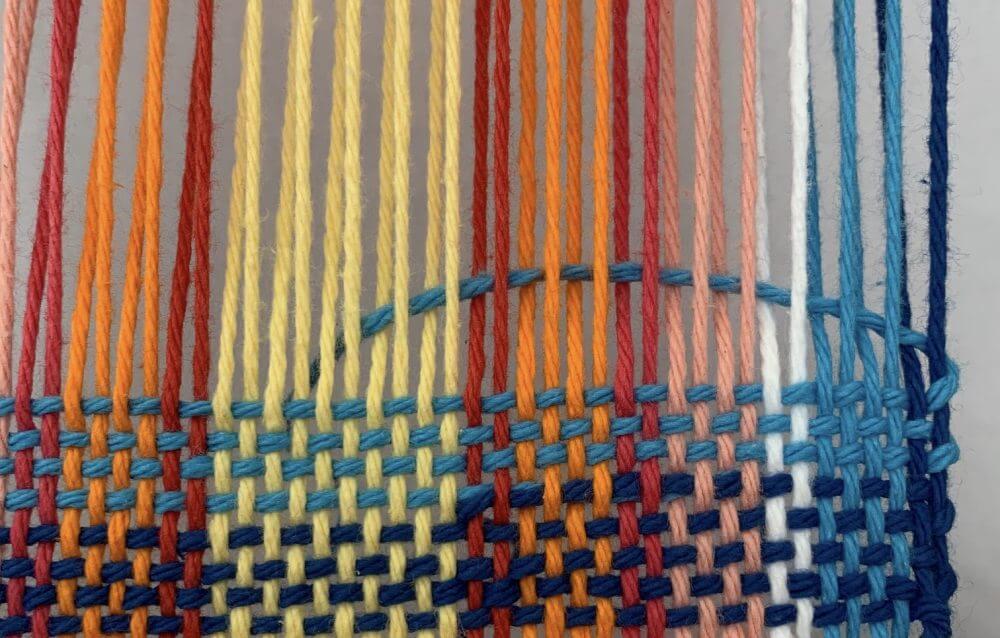
Next, the white will overlap the light blue, just as we did previously with the dark blue.
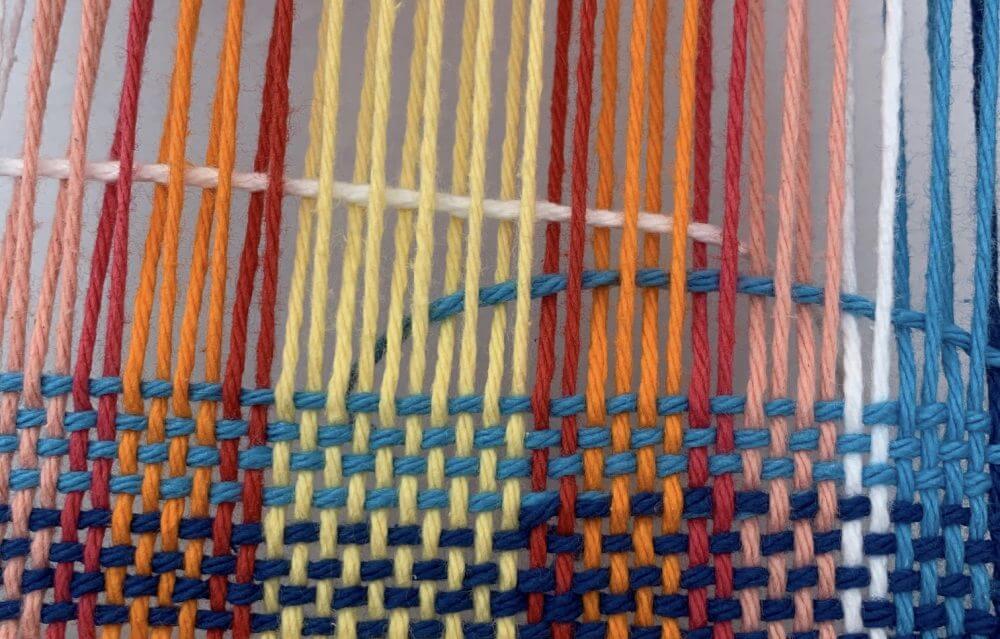
It’s as simple as that. With each color change, move over to the left a bit. Then as the overlaps get close to the edge on the left, begin to work back to the right side again. This will distribute the overlapped yarn across the weaving and prevent a lopsided Mug Rug. One thing to note is that there will be small areas where you will have what looks like an extra row of color. This is OK. It will not be noticeable in the finished product.
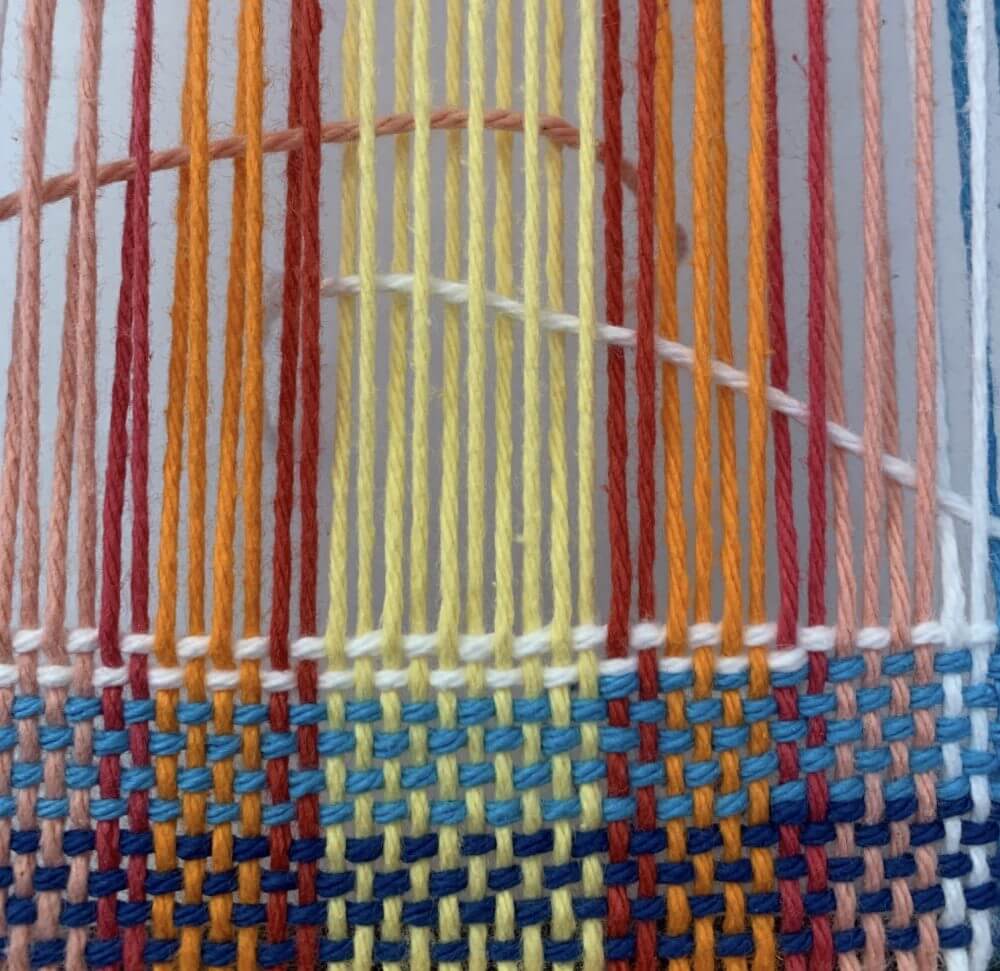

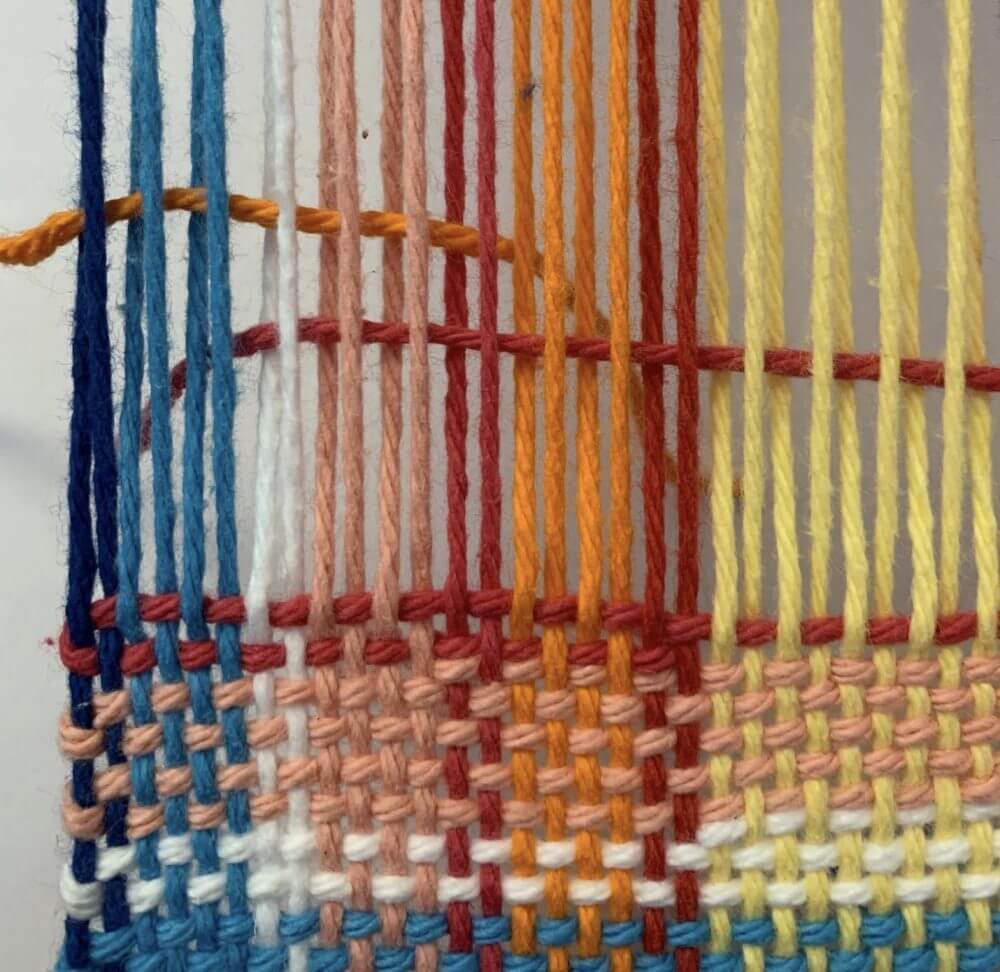
Some people prefer to keep all of the changes at the edges (alternating from side to side). I found that with a lot of changes like we have here, with a thicker yarn in particular, the weft can become uneven. Moving them around seems to work best for this project.
On the final pass of the dark blue, you will only have 3 passes at the edge where there is no overlap of a new yarn. Cut the yarn leaving enough length to complete the hem stitching.
Weave all 4 Mug Rugs, separating each as described in the Welcome Sheet. The recommendations for wet finishing your project can also be found in the Welcome Sheet.
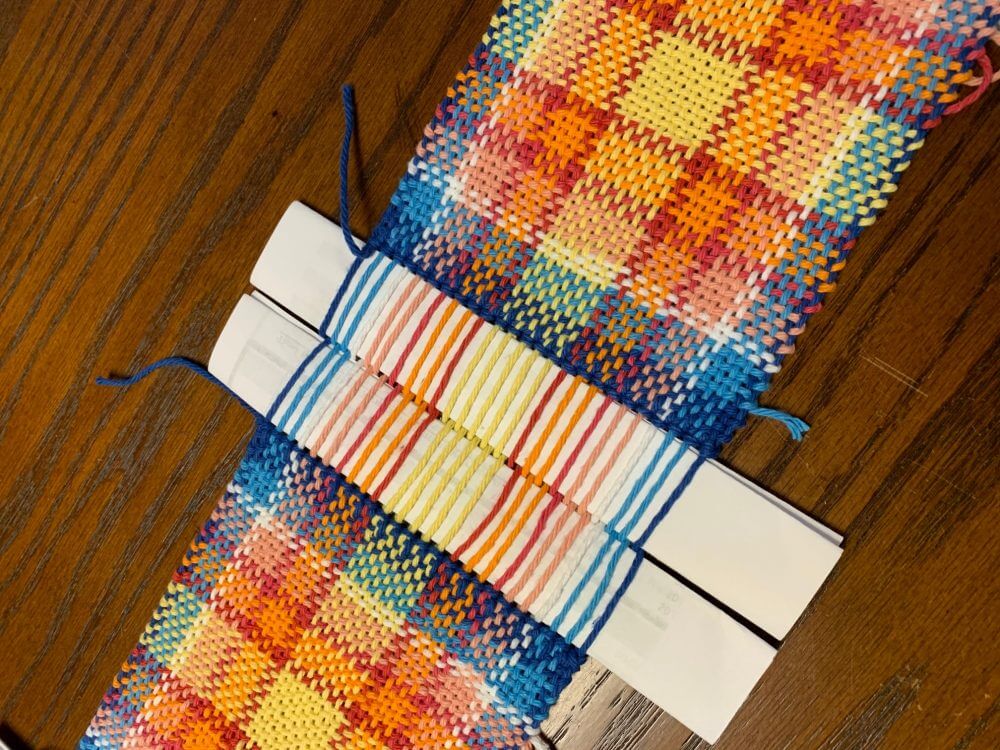
I hope this has given you confidence in changing your weft colors.
You may have noticed that this is exactly the same technique as used when adding more of the same color when the shuttle runs out.
